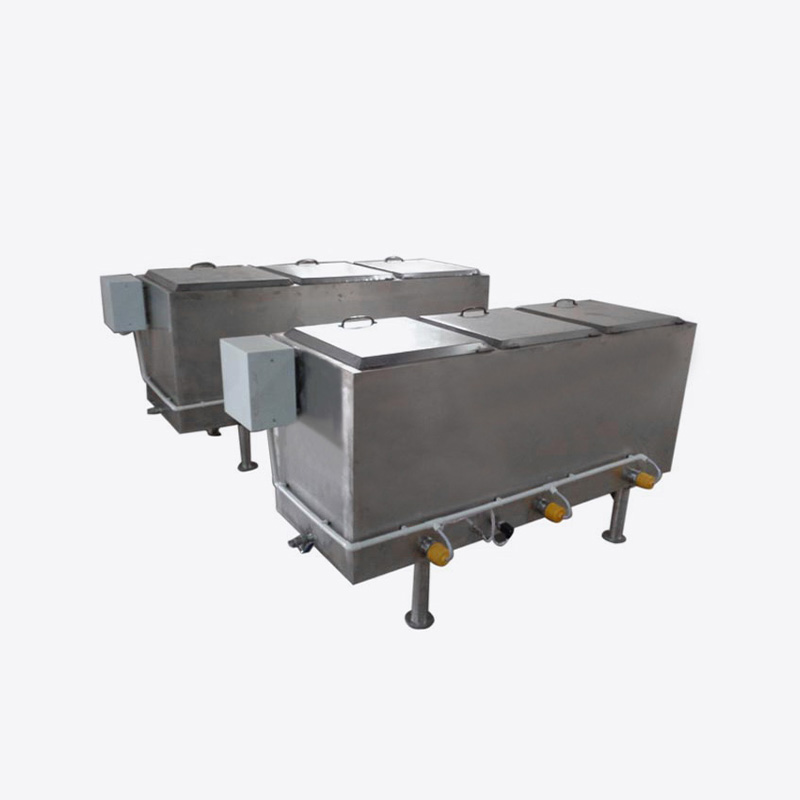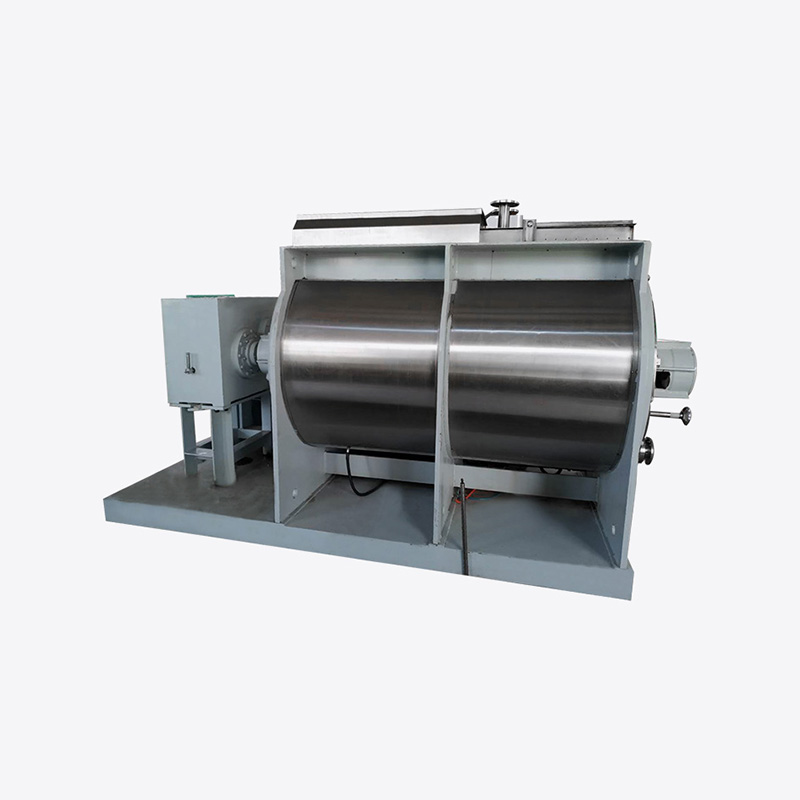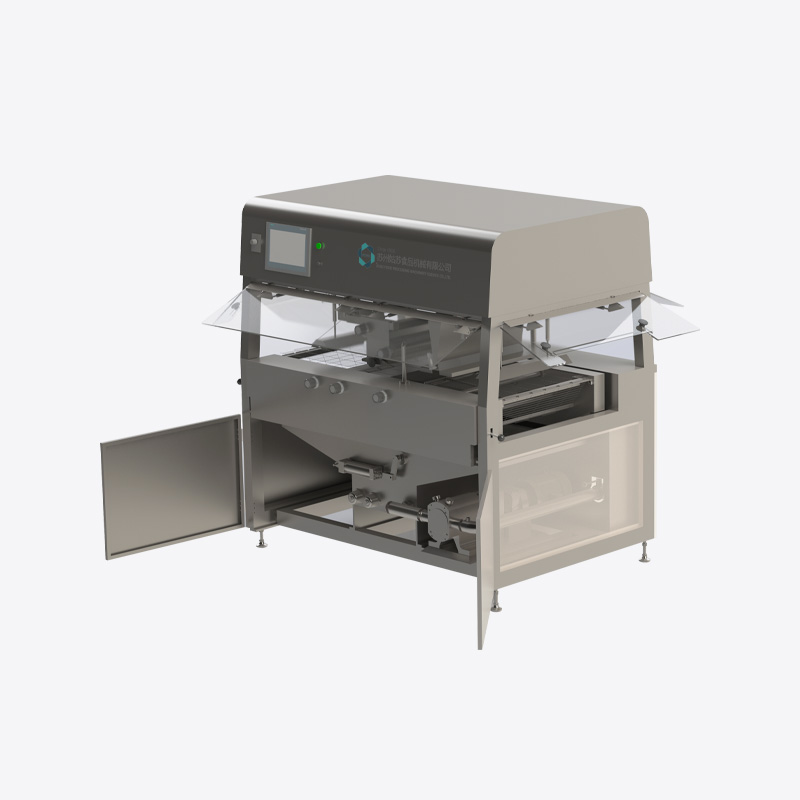Which Features Matter Most When Evaluating a Chocolate Chips Machine for Cookie Production
In the modern food industry, efficiency and precision define how baked products reach the market. A Chocolate Chips Machine plays an important role in shaping the consistency, flavor, and visual appeal of cookies. Understanding what features make these machines effective can help manufacturers make practical investment decisions while maintaining high production standards.
Consistency and Control in Depositing
Uniform chip distribution is essential for achieving visual balance and flavor harmony in every cookie batch. Machines equipped with consistent depositing systems ensure that each portion contains an even spread of chocolate pieces. This feature reduces waste and supports predictable results across long production runs, enhancing workflow reliability.
Adjustable Output and Recipe Adaptability
Modern confectionery lines often require flexibility to produce different products on the same equipment. Adjustable settings for chip size, spacing, or dropping rate make it possible to adapt to various recipes or product designs. This adaptability is especially valuable when production teams need to shift between cookie styles, chocolate types, or other inclusion materials.
| Feature Category | Purpose | Production Benefit |
|---|---|---|
| Adjustable Nozzles | To modify chip size or pattern | Supports recipe diversity |
| Speed Regulation | To match dough and deposit timing | Improves synchronization |
| Digital Interface | To store operational presets | Simplifies line management |
Energy Efficiency and Maintenance Access
Energy management has become a key factor in machinery selection. A well-engineered system minimizes energy loss without compromising output. Easy access for cleaning and maintenance also supports food safety and prolongs equipment lifespan. When operators can quickly remove parts or inspect mechanical sections, downtime is reduced, and hygiene standards are easier to maintain.
Hygiene and Safety Design
In a food-grade environment, sanitation is not optional. Surfaces that are smooth, corrosion-resistant, and easy to clean help avoid contamination risks. Machines built with thoughtful design details—such as fewer gaps, rounded edges, and washable panels—support compliance with food processing guidelines. Safety features like protective covers or automatic shutdown sensors further protect operators during high-volume operation.
Integration with Other Production Systems
A production line functions best when all components communicate efficiently. Integrating a chocolate depositing machine with mixers, ovens, and cooling conveyors allows for smooth transitions from dough preparation to baking. This connection can be achieved through programmable interfaces that align timing, batch tracking, and temperature monitoring. The outcome is a more stable workflow and consistent final product quality.
Material Durability and Long-Term Reliability
The structure and material selection directly affect operational durability. Equipment constructed with strong, corrosion-resistant materials can withstand continuous operation and frequent cleaning. Longevity not only saves cost over time but also provides dependable performance during seasonal production peaks.
Automation and Data Monitoring
Automation technology now allows operators to record production metrics in real time. Data feedback helps identify minor deviations before they affect batch quality. This digital awareness supports ongoing improvement in manufacturing processes, which is increasingly relevant as facilities adopt smart factory principles.
Choosing a Reliable Manufacturing Partner
Selecting a trusted supplier ensures that design, production, and service align with professional standards. Collaboration with experienced manufacturers, enables food companies to tailor solutions based on specific operational needs. The right partnership balances performance, durability, and cost control while maintaining regulatory compliance and ease of use.
When assessing cookie production equipment, decision-makers should consider long-term value rather than focusing only on initial investment. As demand for consistent, high-quality confectionery products continues to rise, machines that offer balanced efficiency, hygiene, and flexibility will remain essential to modern baking lines.
How Can Chocolate Chips Machines Help Snack Producers Become More Sustainable
Sustainability has become a guiding principle for today's food manufacturers. With growing awareness of resource management and environmental responsibility, businesses are rethinking how they produce snacks. A Chocolate Chips Machine can contribute significantly to this transformation by improving process efficiency and reducing unnecessary waste in confectionery operations.
Energy Optimization Across Production Lines
One of the central aspects of sustainable snack production involves responsible energy use. Modern equipment is now designed to operate efficiently, minimizing excess power consumption. This results in a smoother workflow with less energy waste, helping producers balance output with ecological awareness. When machines operate with consistent performance and controlled power distribution, factories can reduce their overall environmental footprint while maintaining productivity targets.
Precise Portioning for Resource Management
Accurate depositing of chocolate pieces plays a key role in avoiding raw material overuse. Machines equipped with controlled dosing systems help ensure that each cookie or snack receives the correct quantity of inclusions. Over time, this level of precision leads to measurable reductions in waste and material costs. It also creates uniformity across batches, which helps brands maintain consistent quality without excessive consumption of ingredients.
| Sustainability Factor | How It Works | Impact on Production |
|---|---|---|
| Precise Ingredient Control | Optimizes raw material usage | Less waste and better consistency |
| Energy Regulation | Maintains stable power flow | Reduces unnecessary energy draw |
| Automated Timing | Aligns with process flow | Enhances overall efficiency |
Reduced Waste Through Improved Product Handling
Spillage and misplacement of materials are common issues in high-speed production lines. Equipment that ensures smoother transfer of chocolate pieces into molds or dough helps minimize these losses. By designing systems that handle materials gently and accurately, producers can cut down on reprocessing or disposal, supporting waste reduction goals.
Recyclable and Durable Machine Components
The materials used in building production equipment also contribute to sustainability. Manufacturers now focus on designing machines with long-lasting, corrosion-resistant components that require fewer replacements. This approach limits industrial waste and reduces the environmental burden associated with frequent part disposal. A longer equipment lifespan directly supports sustainability by minimizing the resources needed for maintenance or new production.
Water and Cleaning Efficiency
Cleaning procedures can consume substantial amounts of water and cleaning agents. Machines built for efficient washdowns reduce the frequency and duration of these tasks. Designs that allow easy access to internal components ensure that sanitation can be achieved with minimal waste of water or chemicals. This not only supports eco-conscious operations but also simplifies daily maintenance routines.
Data-Driven Sustainability Monitoring
Digital monitoring systems allow operators to track power usage, ingredient consumption, and downtime in real time. Data analytics can then identify areas where resources might be overused. By implementing adjustments based on these insights, manufacturers create a continuous improvement loop that aligns productivity with sustainable manufacturing objectives.
Supporting Circular Production Models
A sustainable production approach doesn't stop at the machine. It extends to the supply chain, packaging, and ingredient sourcing. Equipment that integrates with larger digital systems helps companies track their sustainability goals across multiple departments. This coordination enables snack producers to adopt circular production models where materials, energy, and data are efficiently reused.
Partnering with Sustainable Equipment Suppliers
Working with a responsible manufacturer, allows producers to align equipment selection with sustainability goals. Choosing technology designed with efficiency, long lifespan, and environmental compatibility in mind enhances long-term operational stability. Sustainable partnerships encourage innovation in material use, energy recovery, and process automation, supporting a more responsible snack industry overall.
As the global food industry moves toward cleaner production methods, equipment choice becomes central to sustainability success. The right chocolate processing machine supports lower resource consumption, consistent output, and improved material management. Through careful integration of efficiency-focused technology and eco-friendly design, snack producers can achieve measurable progress in their sustainability strategies.
What Trends Are Shaping Chocolate Chips Machine Demand in 2025
In 2025, the snack and confectionery industries are undergoing noticeable transformation. Consumer preferences are shifting toward health awareness, sustainability, and process transparency. As a result, production equipment such as the Chocolate Chips Machine is evolving to align with these market expectations. Manufacturers are now focusing on flexibility, environmental responsibility, and automation to stay competitive in a rapidly changing market.
Customization for Product Diversity
Consumers are increasingly drawn to variety in flavor, texture, and appearance. This demand for creativity has pushed food producers to invest in machines capable of handling a range of chocolate compositions and inclusion sizes. Customization in manufacturing equipment supports new recipe experimentation without extensive changeovers, allowing producers to meet market diversity with minimal disruption to workflow.
Integration of Digital Control Systems
Automation and data connectivity are playing a larger role in equipment design. In 2025, manufacturers seek machinery that communicates with central control systems, providing detailed operational insights. With sensors and real-time feedback, operators can monitor energy consumption, temperature regulation, and ingredient usage. This enhances production precision while reducing unnecessary waste or downtime.
| Trend | Description | Impact on Production |
|---|---|---|
| Automation Integration | Digital control and feedback loops | Higher precision, fewer manual errors |
| Sustainable Engineering | Energy and waste reduction design | Lower resource consumption |
| Flexible Product Output | Adjustable machine parameters | Supports diverse snack development |
Focus on Sustainability and Circular Manufacturing
Sustainability remains a major driver in 2025. Snack brands are prioritizing equipment that supports lower emissions, efficient energy use, and recyclable components. As circular manufacturing concepts gain attention, producers seek technology that enables resource recovery or minimal waste output. This trend encourages long-term partnerships between machinery suppliers and snack manufacturers, focusing on shared sustainability objectives.
Compact and Modular Equipment Design
As factory space becomes more valuable, manufacturers are looking for compact systems that can fit within limited production areas. Modular designs are gaining attention, allowing companies to expand or reconfigure their lines based on demand. These flexible systems make it easier to scale operations gradually, avoiding unnecessary capital investment while maintaining efficiency.
Rising Demand for Automation in Small-Scale Production
Automation is no longer limited to large production facilities. Smaller confectionery and snack businesses are now seeking accessible systems that simplify their processes. In response, equipment makers are designing machines that combine simplicity with digital functionality. This trend enables smaller producers to maintain product consistency while controlling labor costs and material use.
Sustainability in Packaging and Processing
While the machine focuses primarily on production, its role extends indirectly to packaging. Uniform chocolate chip shapes and textures improve packaging efficiency and reduce waste during filling. In addition, more companies are aligning their production goals with recyclable or biodegradable packaging materials, forming a cohesive sustainability chain from processing to delivery.
Collaboration Between Machine Builders and Snack Brands
Collaborative innovation has become a defining feature of the 2025 confectionery sector. Manufacturers and snack brands now work closely to tailor machinery to specific production needs. By combining operational knowledge with engineering expertise, both parties achieve efficient solutions that match consumer demand and environmental expectations.
The Influence of Global Consumer Lifestyles
Health consciousness and ethical consumption continue to influence production strategies. Brands are responding with reduced-sugar, organic, and plant-based variations of chocolate snacks. Machinery that can handle alternative ingredients and maintain consistent output is in higher demand. This shift demonstrates how consumer lifestyle trends are directly shaping equipment development priorities.
Automation and Workforce Transformation
As more tasks become automated, workforce roles are evolving. Instead of repetitive manual duties, operators now focus on monitoring, maintenance, and optimization. This transition requires upskilling, supported by intuitive machine interfaces and training modules. By simplifying control systems, equipment builders help producers adopt automation without operational complexity.
The Outlook for 2025 and Beyond
The confectionery machinery market in 2025 is defined by adaptability and environmental awareness. Snack producers seek machines that combine technical precision, sustainable operation, and flexible application. Equipment providers continue to address these changes through engineering innovation and collaboration with food manufacturers worldwide.
Modern systems are no longer just tools for production—they are strategic assets that shape brand identity and operational efficiency. The integration of automation, digital tracking, and sustainable engineering will continue to influence market growth and production design for years ahead.



 English
English Español
Español









